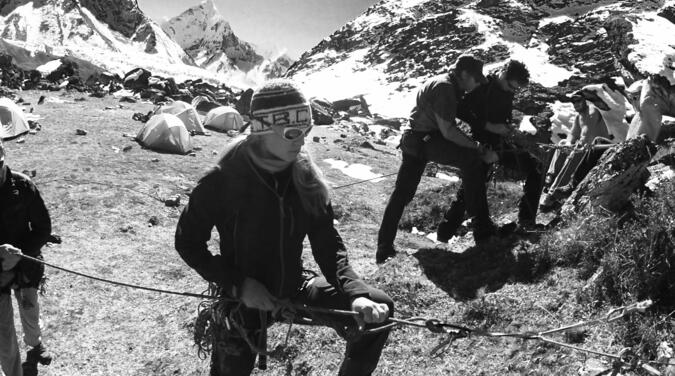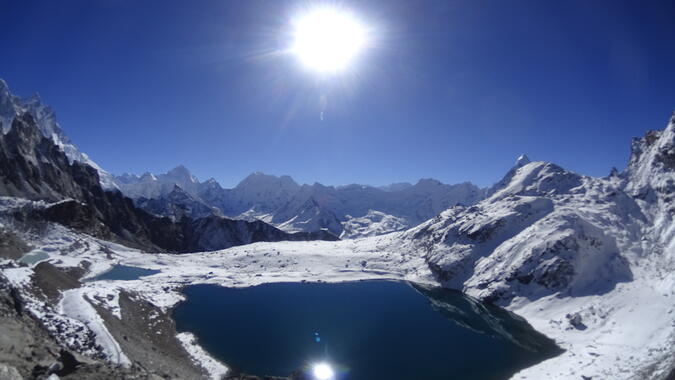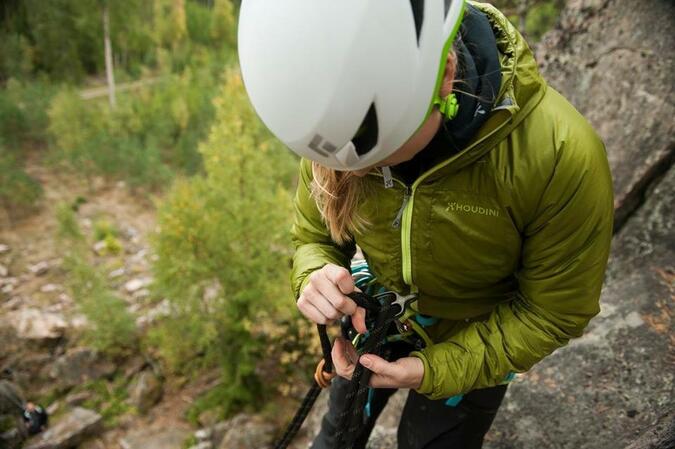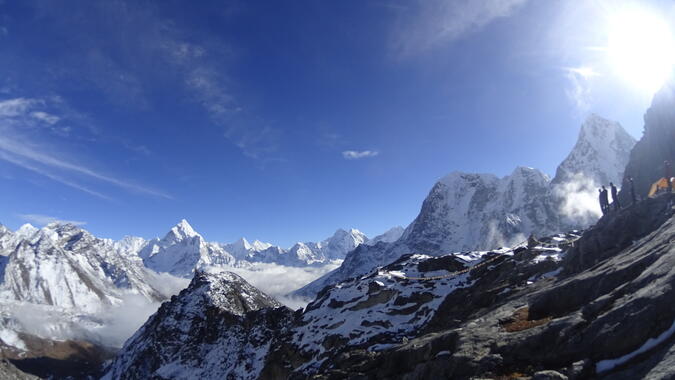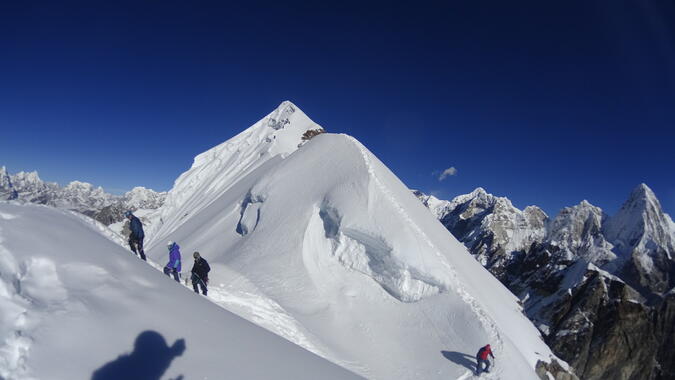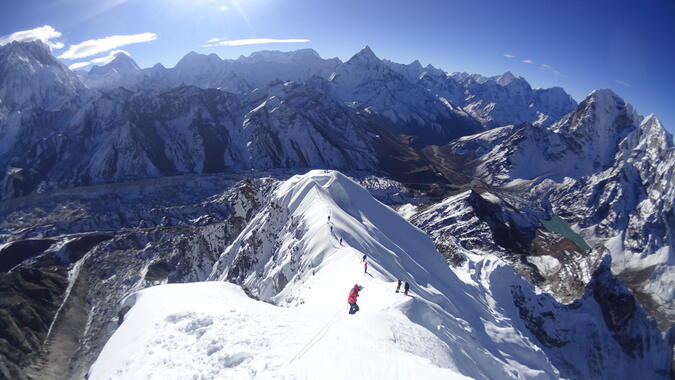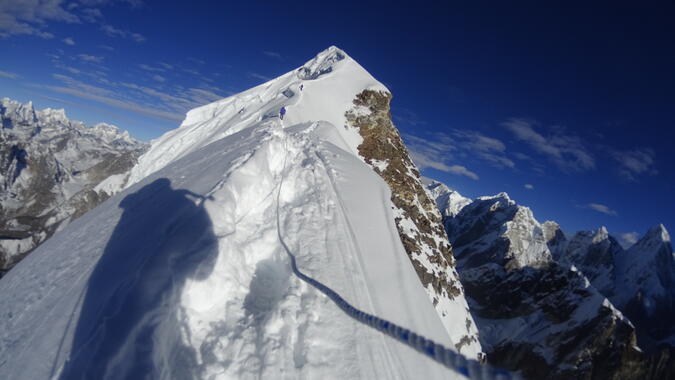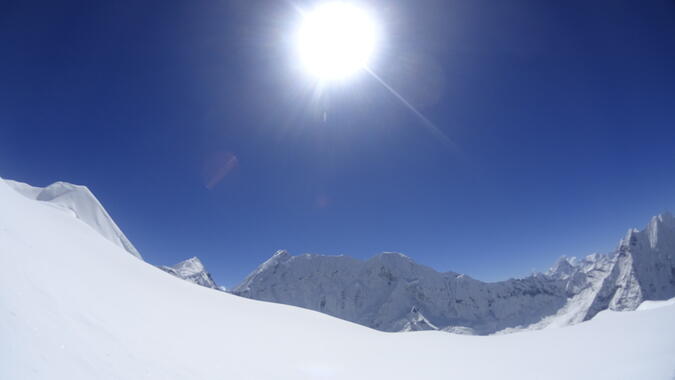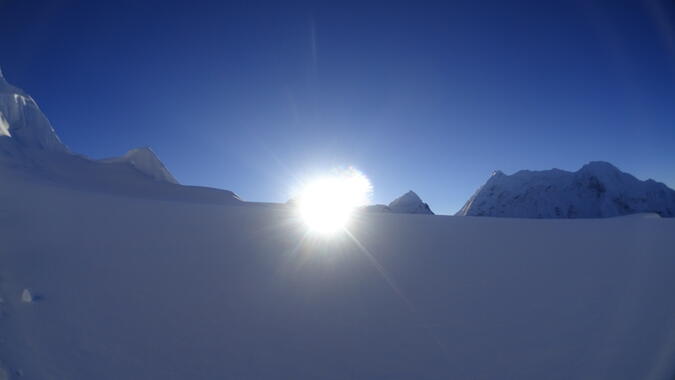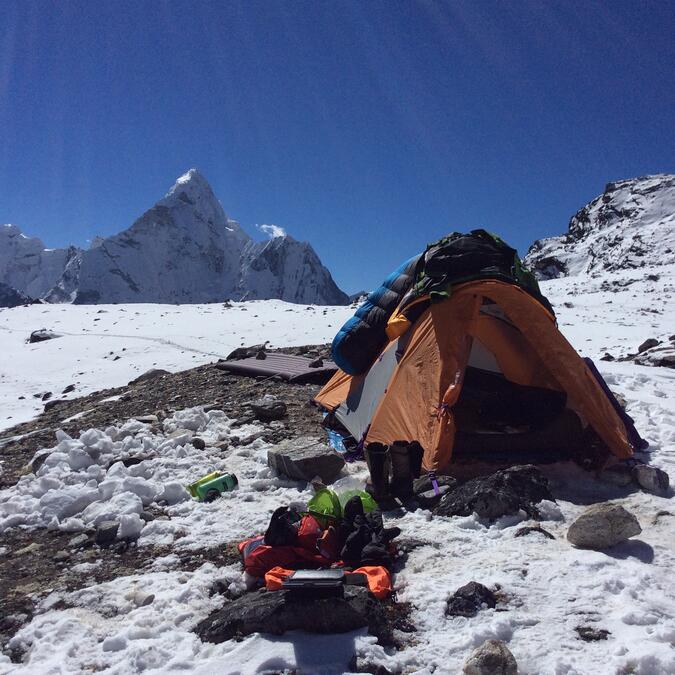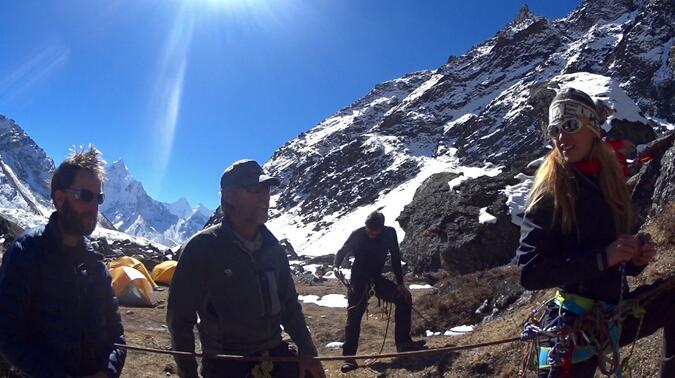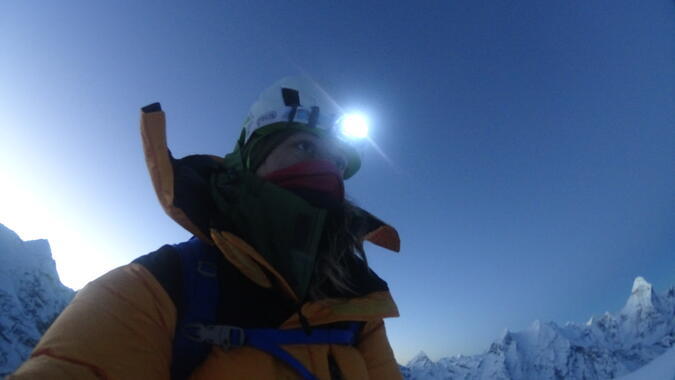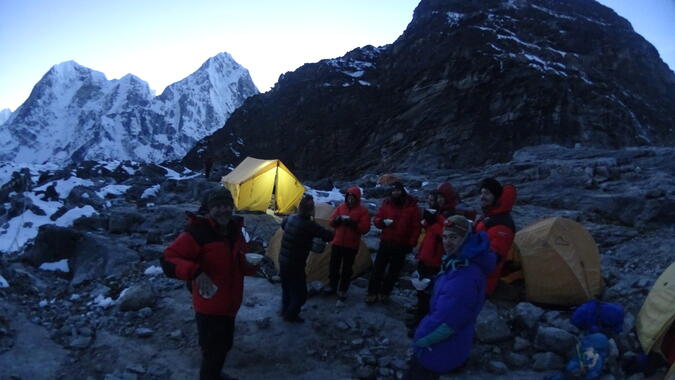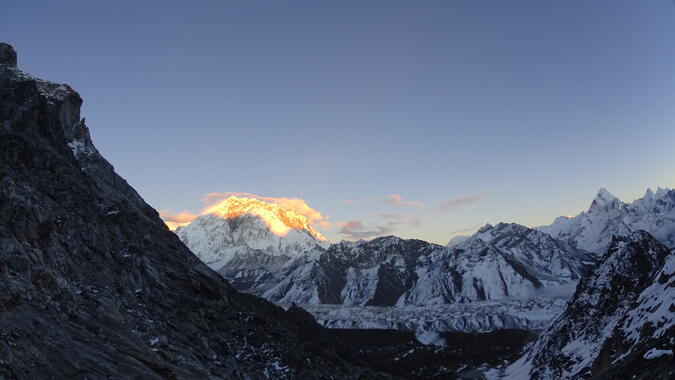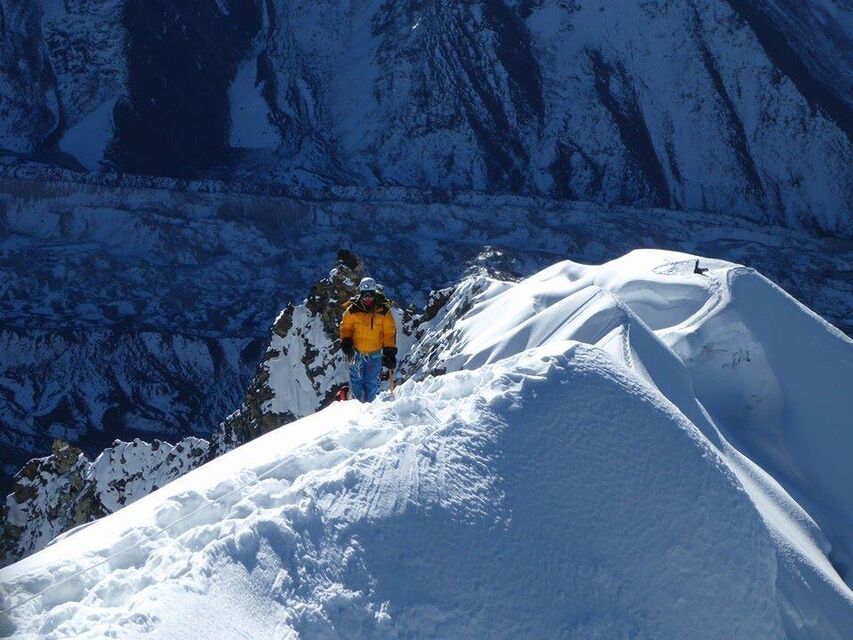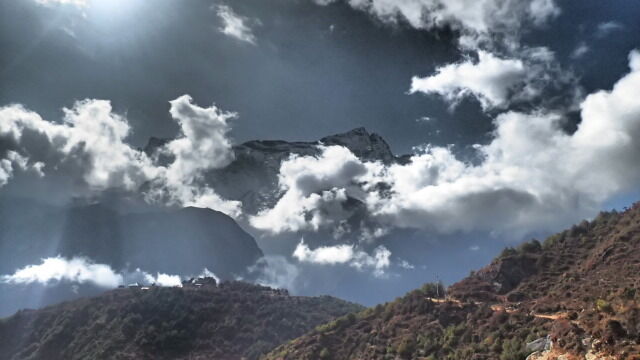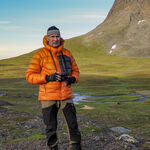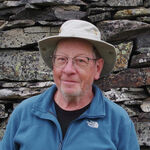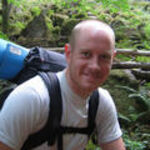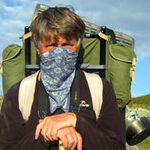Final post #3: What did I learn?
First of all, apologies for taking so long to get this last post up! Sometimes family, work and life happens and other things must step aside to make some room for things that, for the time being, are in more need of your attention.
However, I really wanted to share some stuff with you that I learned from this last expedition in the Himalayas. It's unlikely that I would be able to sum it all up in this post, so I won't try. Some lessons I learned right there, but some of it "hits" me gradually. As time goes on I travel back in time and yet another piece of the puzzle falls into place. In retrospect "Aha moments" slips into my daily life and continuously shapes who I am and aim to become. To be honest, sometimes I'm really not sure how I even got here. That's the amazing thing about creating dreams and setting new goals. It takes you on a journey, and further down the road you suddenly look up and realize... you're life is different. You are different. The shift actually happened, and you are becoming who you once wanted to be.
This last expedition taught me a lot. Besides always making sure my lighter, head lamp and survival shelter never left my backpack, I learned how to get through a different kind of struggle this time. I got to experience how it feels to ice climb with pneumonia, how to remain focused after sleeping 1-2 hours/night for over a week, how to breathe through a ripping headache days on end above 5,000 m (due to a pinched nerve) and last but not least how to crack your back on top of a stone pile when needed. Yes, the lessons were and still are many. It's amazing how creative you become when you really need to, "MacGyver-style". I loved him growing up! I remember watching the episodes even before I learned how to read, before I knew a single word of English. My dad sat beside me in the sofa and summarized what had happened and everything that had been said every 10 minutes. I imagined myself being in his stories. Thinking fast, acting in a split second, solving problems, situations. Always another adventure ahead.
But you got to be out there, in the mountains, to actually learn. You can't just imagine, you have to train, experience, implement and repeat. This time around I sort of had my own "MacGyver" with me, leading the team. Mr Tim Rippel. He knows almost every trick in the book. He has been operating mountaineering and trekking expeditions in the Himalayas for the past 25 years. Basically a walking, breathing mountaineering library. "Tough as nails" as he would've put it.
Anyhow, bare with me!
Keep in mind that these lessons are originated from my own experiences, purely subjective and personal. I am in no way an expert, nor do I claim to be. However, "sharing is caring" as they say. Sometimes when we share, great things happen! Hopefully this will be of some use to a few people out there, or at least pass on a shred of joy by reading it.
Risk assessment, training and skills
What, when, where and how? Essential and many times crucial questions that you at some point will need to know the answers to. This takes time, practice and a good teacher.
"Block and Tackle Maria! Never forget the Block and Tackle!" I heard him, loud and clear. All the ropes going back and forth, one end lead to yet another. It looks almost like a labyrinth of ropes. At first it's all just a mess, no logic to it, no idea where to pull, what to attach and where. Gradually it starts to make sense. Drill after drill, undo, do over, tear down, build back up, repeat. Again and again. Until it stuck.
Many of you already know this, but for those of you who don't, a "block and tackle" is a form of hauling system, a great tool to get through and handle a crevasse rescue (when someone falls down into a deep crack or fracture on a glacier). Two or more people are usually tied together with a rope when moving across a glacier, forming a rope team. If/when one climber falls into a crevasse the other climbers can (hopefully) stop the fall and hold the falling climber. With proper knowledge the team can help this person by stoping the fall, anchor the rope, prepare the crevasse lip, set up a "block and tackle" and haul the climber up (roughly summarized). It's a great, safe and efficient way in a situation like this as it gives a 2-to-1 mechanical advantage (less weight to pull). Learn it!
Light, shelter and lamp
Right equipment is your best friend, and lifesaver. Literally. When going outdoors there are 3 things you must never leave behind. (1) A lighter or something equivalent with which you can make a fire (make sure it works even if it's wet or cold outside). (2) Some form of shelter that you can use to protect yourself from wet, windy and cold environment. (3) Headlamp or some kind of light-source. Make sure that this can withstand cold and wet weather, and have extra batteries in hand.
When to push and when to back off
Knowing you limits, and pushing through them. It's a tricky assessment, a judgement call. Here's where the training (mentally and physically) and the experience will come into play. When your body is shutting down, is it really (?) or is it just your mind collapsing? Which breaks first? Sometimes it's impossible to know the difference, but sometimes we can tell the difference but choose to ignore it and keep going.
"I could have gone further", "I could have done more", "I could have helped more", "I should have pushed through", "I would have made it". Or "I should have listened to the signs", "I should have been more humble", "I should have been more patient", "I could have taken that extra precausion", "I should have prepared myself more". There's always a lot of "could haves" and "should haves". It's inevitable. Thus what you want and need along the way is a good, correction great (!), teacher who can minimise the damage of those could haves and should haves. That way you can learn, make mistakes and grow without the lessons being fatal or harmful. The rest is up to you. Getting to know your mind and body, both at sea level and high altitude, is crucial. You are either you best friend or greatest foe. Get to know your weak spots and when they occur. Create as many of those moments as possible and start working on your weaknesses so you can turn them into strengths. Mental training and resilience is key.
Pain and mental training
"What you think, you become"
- Buddha
Pain and mental training are eachothers successfactors.
Lots of athletes have a mantra, a saying, when faced with pain. "Pain is merely physical". That's partly true. However, how you cope with the pain and which thoughts you allow to go through your mind is in direct relation to how your body will respond to that pain. Thus determining how much pain it will inflict and how much of it you will actually perceive. Kind of amazing isn't it?
Pain, unease and struggle is inescapable when climbing mountains.
In other words, you will have great use of training on your pain management at home prior to an high altitude expedition. Train when you are tired, sleep deprived, sore and when you've got a headache. Get used to dealing with lots of lactic acid during your workouts and get out in the worst possible weather. I also have a "nail-mat" at home which I use for my daily breathing practice, that is how to breathe through the pain until I can relax regardless of the pain. It's all in your head.
“Pain is a relatively objective, physical phenomenon; suffering is our psychological resistance to what happens. Events may create physical pain, but they do not in themselves create suffering. Resistance creates suffering. Stress happens when your mind resists what is... The only problem in your life is your mind's resistance to life as it unfolds.
- Dan Millman
Knowing your weight, gear and backpack
Getting familiar with your gear, backpack, load and how to pack it will make it that much easier when you're on the mountain. Walk at least 30-40 km in both sun, rain and wind to make sure it feels good and holds up. Don't take off with new gear. Buy it at least a few months before your expedition so that you can load up and try it out, and still have time to adjust or switch to something else if you have to. Good gear equals a a pleasant journey. No one likes to have bruised hips, chafed feet, a sore back or ice cold fingers. It's like getting to know new friends, it takes time and sometimes you need to either reconcile, learn to love them or find new ones.
Get familiar with your body and fuel
There's no way of knowing how your body will react to a certain situation, altitude, incident or challenge. However, you can provide yourself with opportunities where you, under less extreme circumstances, expose your body to different stress factors. Thus learning how to manage and operate mind and body while being deprived of tools and resources. For instance I make sure to plan low-fuel workouts a few days a week 3-4 months before an expedition. Those days I wake up around 5 am and start off with a heavy weightlifting workout followed by a 3-4 hour conditioning workout. Between 5 am - 1 pm I don't fuel my body with anything but amino acids and water, teaching my mind and body to perform while being deprived of food and energy. This can happen every now and then during an expedition when you can't eat (due to nausea) or lack of resources (out of food, loss of food or traveling with a light pack). Even finding out what you can eat (or force yourself to eat) during a stomach-flue could come in handy. Write down what those things are and make sure to pack some of it in your backpack. It might become a lifesaver when you least expect it.
The balance between self-reliance and teamwork
Being apart of a team is an art of interdependence. You need to be self-reliant and at the same time a reliable team-player. A self-reliant climber is a competent, resourceful and strong individual who will be an asset rather than a liability to the team but also has the ability to take care of him/herself while simultaneously support fellow climbers when needed. A team is in the end never stronger than its weakest link, but a good team makes each other better in the sense that they are not only fellow climbers but also fellow teachers. To humbly acknowledge, appreciate and make use of the individual skills and knowhow's will form not only a good team but a great team.
Every team member is crucial to the team as a whole yet completely responsible for the individual effort. A few thoughtful pointers that I've picked up along the way > (1) Don't expect others to care for you but appreciate when they do. (2) Tend to your own attitude before criticizing others. Making an effort to stay tolerant rather than passing judgment will get you far. (3) See yourself as an important part of the team and carry yourself as such. Diminishing yourself will never contribute anything to the team. (4) Do the best you can, where you are with what you've got. (5) Stay away from whinging. Accept what is and make a plan of action. Twisting in thoughts will only get you so far. (6) Have fun. Regardless of what happens, humor and laughter will keep the most surreal moments together. (7) Love. Stay generous and caring toward your teammates, even when you're tired. It all comes back to you in the end.
"If you want to go fast, go alone
If you want to go far, go together.
-African proverb
Until next time!
Love
/M

